


William Edward Trent (1874 - 1948) [1] was a British architect.



William Edward Trent (1874 - 1948) [1] was a British architect.
His cousin was the sculptor and medallist Newbury Abbot Trent. [2]
Together with Henry Poston, to whom he was apprenticed, and then his assistant, [1] he was the architect for the Earl of Essex, a Grade II listed public house at 616 Romford Road, Manor Park, London, built in 1902. [3]
Having been articled to Henry Poston of Lombard Street, London in 1892, he remained with Poston as his assistant until he started an independent practice in London in 1905. [1]
From 1909, Trent specialised in cinema design. This led to his appointment first as the chief architect to Provincial Cinematograph Theatres (PCT), and then as architect to the Gaumont British Picture Corporation, which took over PCT in 1929. [1] These cinemas/theatres included the Regent Theatre, Ipswich, Apollo Victoria Theatre [ citation needed ] and the Gaumont Finchley (1937), designed with the assistance of his son W. Sydney Trent and R. Golding. [4]
His son William Sydney Trent (1903-1944) was also an architect. When his father became a full-time employee of PCT, his son took over his private practice, retaining him as a consultant. However, he joined Gaumont British in 1932 to help his father with the huge increase in work with the advent of talking pictures. [1]

Francis Matcham was an English architect who specialised in the design of theatres and music halls. He was best known for his work in London under Moss Empires, which included the designs of the Hippodrome (1900), Hackney Empire (1901), Coliseum (1903), Palladium (1910) and the Victoria Palace (1911). During his 40-year career, he was responsible for the design and construction of over 90 theatres and the redesign and refurbishment of a further 80 throughout the United Kingdom.

The Regent Theatre is a theatre in Stoke-on-Trent, England. Constructed in 1929 as a cinema, it is one of several theatres in the city centre and one of two operated by the Ambassador Theatre Group on behalf of Stoke-on-Trent City Council. The building was converted for full-time use as a theatre in 1999, and since then has hosted a number of shows and musicals. The theatre is also the northern base for the Glyndebourne Touring Opera.
William Robert 'Bertie' Crewe was one of the leading English theatre architects in the boom of 1885 to 1915.
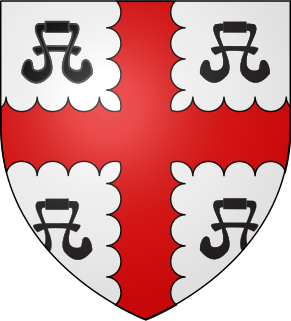
Henry Bourchier, 5th Baron Bourchier, 2nd Count of Eu, 1st Viscount Bourchier, 1st Earl of Essex, KG, was the eldest son of William Bourchier, 1st Count of Eu, and Anne of Gloucester. On his mother's side, he was a great-grandson of Edward III of England.

The artsdepot is a multi-purpose cultural centre located in North Finchley, in the London borough of Barnet. It was officially opened on 23 October 2004 for the enjoyment and development of the arts in North London.

The Apollo Victoria Theatre is a West End theatre on Wilton Road in the Westminster district of London, across from London Victoria Station. Opened in 1930 as a cinema and variety theatre, the Apollo Victoria became a venue for musical theatre, beginning with The Sound of Music in 1981, and including the long-running Starlight Express, from 1984 to 2002. The theatre is currently the home of the musical Wicked, which has played at the venue since 27 September 2006.
Edward Black was a British film producer, best known for being head of production at Gainsborough Studios in the late 1930s and early 1940s, during which time he oversaw production of the Gainsborough melodramas. He also produced such classic films as The Lady Vanishes (1938). Black has been called "one of the unsung heroes of the British film industry." In 1946 Mason called Black "the one good production executive" that J. Arthur Rank had. Frank Launder called Black "a great showman and yet he had a great feeling for scripts and spent more time on them than anyone I have ever known. His experimental films used to come off as successful as his others."
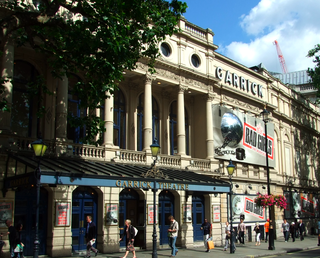
Walter Lawrence Emden was one of the leading English theatre and music hall architects in the building boom of 1885 to 1915.
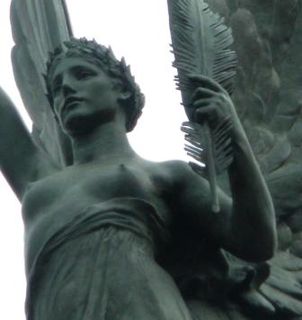
Newbury Abbot Trent was an English sculptor and medallist. Trent studied at the Royal College of Art and Royal Academy Schools, where he became an associate. His works include reliefs, statues and other forms of sculpture. Many of his most notable works are war memorials in England, Scotland and Wales.

John Stanley Coombe Beard FRIBA, known professionally as J. Stanley Beard, was an English architect known for designing many cinemas in and around London.
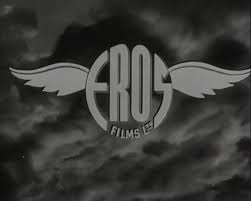
Eros Films was a British film distribution and, later, production company, in operation from May 1947 to June 1961. It was founded by three brothers: Philip, Sydney, and Michael Hyams.

The Tivoli Theatre of Varieties was a popular English theatre based in the Strand, West London. It was designed by Charles Phipps and was built during 1889–90 at a cost of £300,000. It was constructed on the former site of the Tivoli Beer Garden and Restaurant. In the consortium that financed the project was the actor Edward O'Connor Terry. The hall opened on 24 May 1890 and was located opposite the Adelphi Theatre.
Hannam Edward Albany Ward, known as Albany Ward, was a pioneer English theatre proprietor and cinema developer, who ran one of the largest cinema circuits in Britain in the early part of the twentieth century.

The Earl of Essex is a Grade II listed public house at 616 Romford Road, Manor Park, London.

Henry Poston was a British architect.
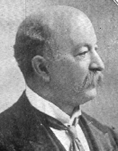
Samuel Knight (1834–1911) was a British architect practising from Cornhill Chambers, 62 Cornhill, London EC and later 175 and 176 Temple Chambers, Tudor Street, London EC.
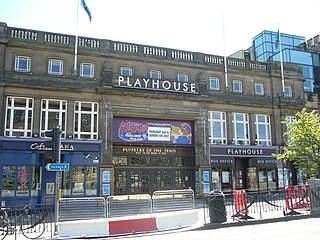
John Fairweather FRIBA was a British architect, who specialised in cinemas.
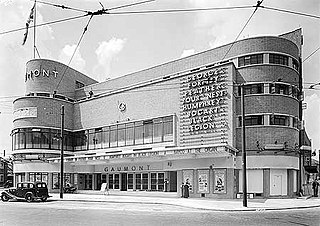
The Gaumont Finchley was an architecturally notable cinema in north Finchley, London. It opened in 1937 and closed in 1980, before being demolished in 1987.

The Embassy Cinema is a former cinema in the town of Chadwell Heath, Greater London. It was once known, among locals, as The Gaumont. It was designed in an art deco style, with a streamline moderne interior, by Harry Weston in 1934. The building is situated on the border of Redbridge and Barking & Dagenham, in the Chadwell Heath District Centre. The cinema closed in 1966 and became a Bingo Hall. In 2015, following the closure of the Bingo Hall, it was then used as a wedding hall/banqueting suite. The building was listed as an Asset of Community Value by the 'Chadwell Heath South Residents' Association' in August 2017 and is currently the focus of a major cinema restoration project.
The Gordon Theatre was a theatre in Stoke-upon-Trent, in Staffordshire, England. It was subsequently the Hippodrome Theatre, and the Gaumont Cinema.
![]() Media related to William Edward Trent at Wikimedia Commons
Media related to William Edward Trent at Wikimedia Commons